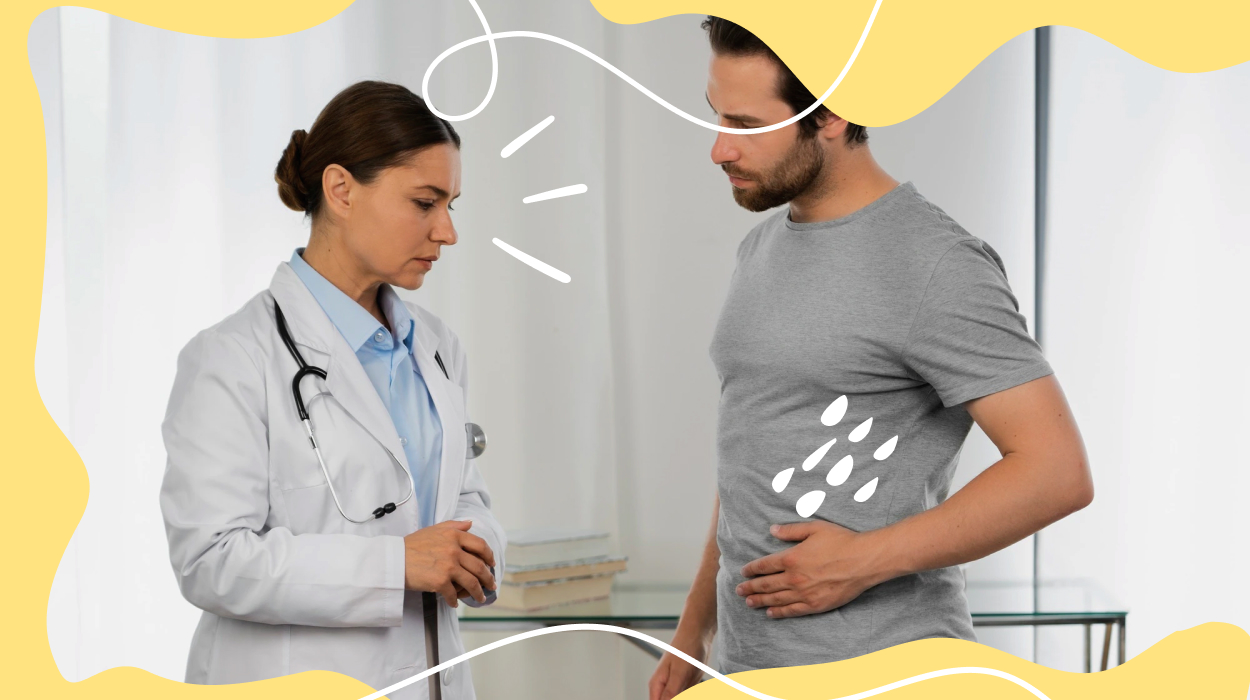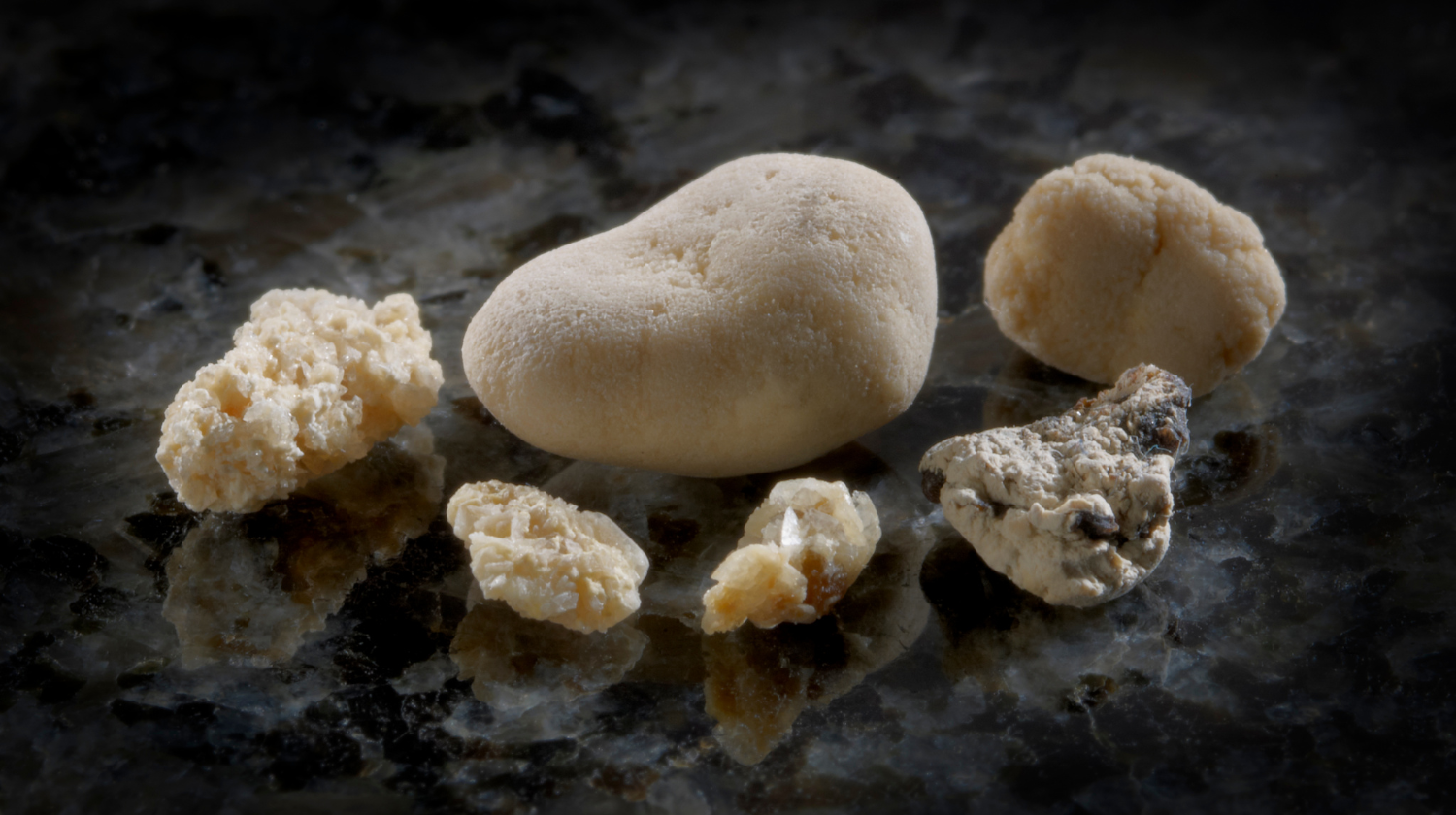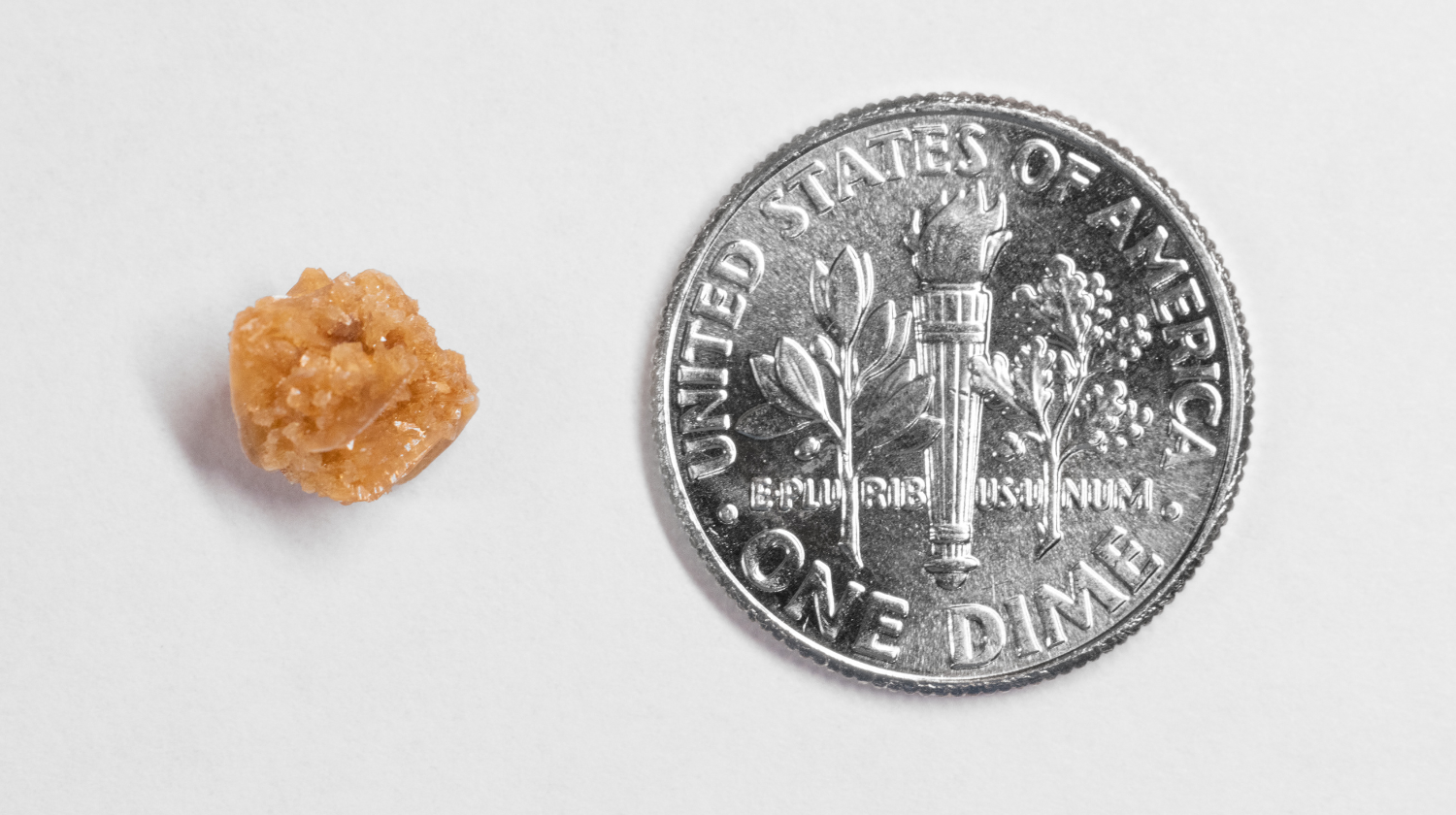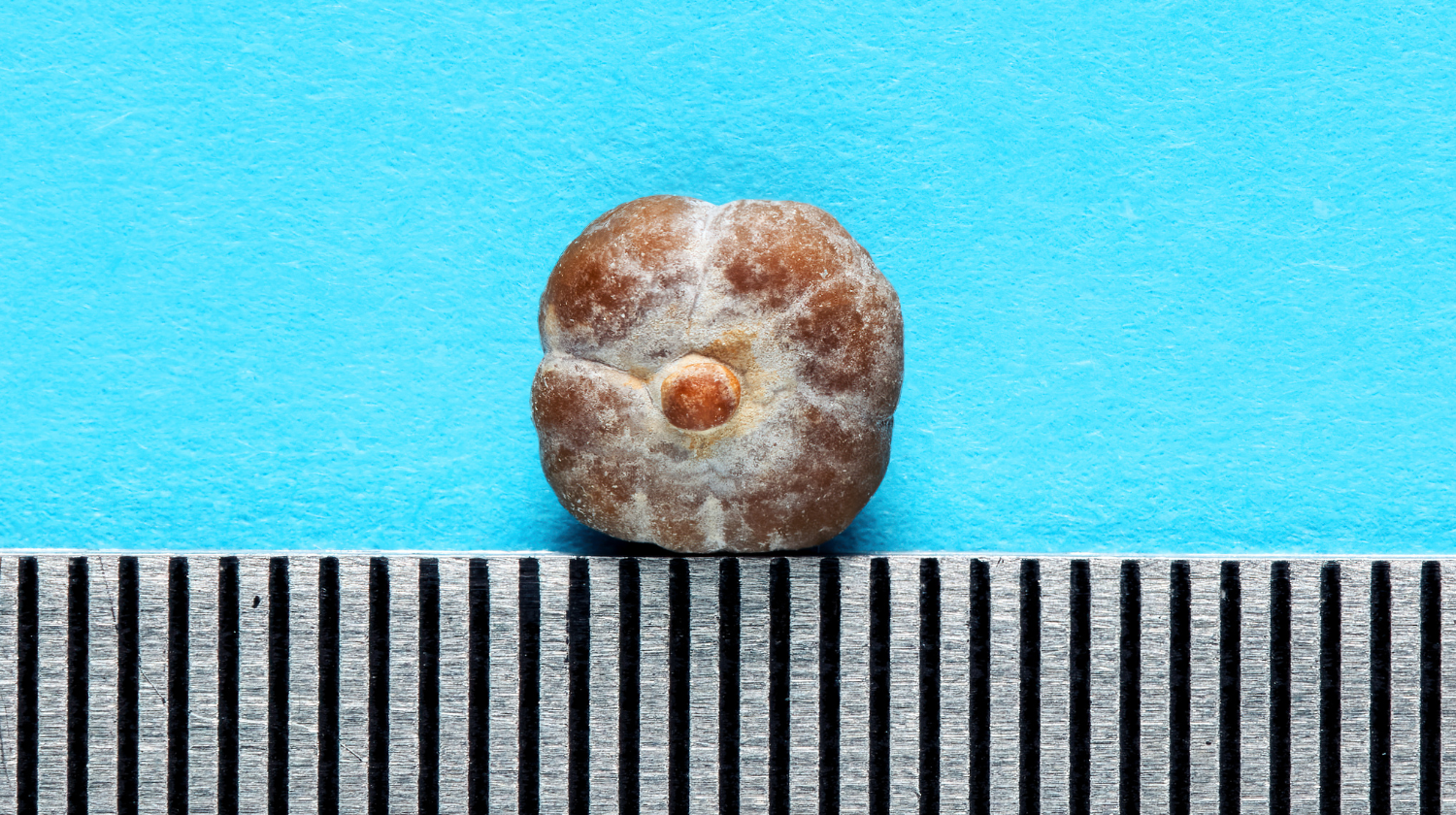 Expert's opinion
Expert's opinion
Expert's opinion
The article is a subjective view on this topic written by writers specializing in medical writing.
It may reflect on a personal journey surrounding struggles with an illness or medical condition, involve product comparisons, diet considerations, or other health-related opinions.
Although the view is entirely that of the writer, it is based on academic experiences and scientific research they have conducted; it is fact-checked by a team of degreed medical experts, and validated by sources attached to the article.
The numbers in parenthesis (1,2,3) will take you to clickable links to related scientific papers.
What Size Kidney Stone Requires Surgery? Symptoms & Treatment

Kidney stones can be highly uncomfortable. Some patients even describe them as more painful than childbirth!
Although small, they can cause intense pain and discomfort while passing through the urinary system. Left untreated, they can lead to complications such as urinary tract infections or kidney function impairment.
Smaller kidney stones can usually pass on their own, but larger kidney stones might require surgery. In this article, we will discuss common sizes of kidney stones, how to get rid of kidney stones, common treatments for kidney stones, and what size kidney stone requires surgery.
What Size Kidney Stone Requires Surgery?
Kidney stones[1], which are also known as nephrolithiasis, renal calculi, or urolithiasis, are hard formations of salts and minerals filtered through the urine. They can form anywhere along the urinary tract, including the kidneys, ureters, and bladder.
Surgery determination is based on several factors, including symptoms, size, and location of the stone. Generally, stones smaller than 5 mm in diameter will pass on their own. Stones larger than this may be candidates for medical treatment or surgical procedures based on a number of factors.
Common Sizes Of Kidney Stones

Kidney stones can range in size and composition. Calcium stones[2] are the most common, while struvite stones and cystine stones are rarer.
Your doctor will order special imaging tests such as a CT scan, kidney ultrasound, or X-ray to diagnose kidney stones. This will help your doctor determine the kidney stone size. They might also order a blood test to evaluate your renal function.
The chance that a stone will pass on its own depends mainly on its size and location. Stones that are smaller and further down along the urinary tract are more likely to pass without surgical intervention.The general rule of thumb is that stones less than 5 mm will pass spontaneously[3]. Asymptomatic stones are usually this size, and you probably will not even know they’re there. These kidney stones typically do not require medical treatment but may require supportive care, such as increasing fluid intake or pain relievers to alleviate discomfort.
For stones larger than 5 mm in diameter, there is less of a chance that the stone will pass independently the bigger the stone gets. These kidney stones often require medical treatment beyond pain control, such as medical expulsive therapy[4] (MET). In MET, certain medications are prescribed to help pass the stone.
For stones larger than 10 mm, they will require urgent urological evaluation. These stones usually will require surgery. Large stones can obstruct urine flow and often require emergency intervention.
Common Kidney Stone Treatments

Most stones don’t require surgical treatment. Small kidney stones often pass through the body naturally when the individual urinates.
If you seek professional help, your doctor might recommend straining your urine to catch the kidney stone for stone analysis. This can help you identify the type of stone you have. Identifying the type of stone you pass can help guide how your kidney stones are treated and help your doctor determine the potential cause.
Certain treatments can help speed up the kidney stone removal process and make it less painful. This includes drinking more fluids, taking pain relief medications, and taking medications to help the stone pass.
Drinking More Fluids
Kidney stone treatment will always include increasing fluid intake, particularly more water. So, how much water should you drink a day? Drinking 8-10 eight-ounce glasses can help prevent buildup of minerals such as uric acid in the urine and promote the spontaneous passage of a stone in the kidney.
Studies have shown that the type of beverage[5] you consume can impact kidney stone formation. This is because certain beverages can change the pH of your urine[6] and lead to different kinds of stones forming.
There has been anecdotal evidence[7] that consuming dietary vinegar, such as apple cider vinegar, can be beneficial for stones in the kidney due to its alkaline properties and potassium content. However, there is no current research to back up specific claims about apple cider vinegar. You can reap the benefits of apple cider vinegar by drinking the liquid form or by consuming other variations, such as gummies, tablets, or chews. Here is a link to what we would say are the best apple cider vinegar gummies, and you can also explore this skinnyfit review to find out how they’ve helped others.
Pain Relief Medications
Pain control is a necessary medical therapy for the treatment of a kidney stone. Stones in the kidney can cause pain in the abdomen, back, groin, and urinary symptoms[8]. The location of the pain can move as the stone passes through the urinary tract and often waxes and wanes in intensity.
To alleviate discomfort until spontaneous passage, your doctor may recommend NSAIDs for pain relief. This includes medications such as naproxen or ibuprofen.
Studies have shown that NSAIDs are as effective as opioid medications[9] at reducing pain during a kidney stone. Another benefit of using an NSAID is it also may help relax the smooth muscles of the ureter. This part of the urinary tract connects the kidney to the bladder. Relaxing the muscles in the ureter can further help to alleviate pain and allow the kidney stone to pass easier and faster.
Stone Passage Medications
For some people, medical intervention might be needed to help relax the urinary system muscles that can make a stone pass easier. This is known as medical expulsive therapy (MET). MET[10] is often recommended if a kidney stone is between 5 mm and 10 mm in size.
Different types of medications can be used for MET. This includes alpha blockers, calcium channel blockers such as nifedipine, and tadalafil.
Alpha-blockers, the most commonly prescribed medication, will relax the muscles in the ureter. Most stones will pass faster with less pain. A recent meta-analysis found that kidney stone clearance was significantly more likely with alpha-blocker therapy[11] than with conservative treatment alone. Treatment with an alpha-blocker like tamsulosin can facilitate stone passage.
What Size Kidney Stone Requires Surgery

The main reasons for surgical stone treatment include pain, infection, and urinary tract obstruction. If you are not experiencing any pain or symptoms, medically treating stones is usually unnecessary especially if the stone is smaller than 5 mm in diameter.
Some kidney stones will require surgery. The current surgical therapies include shockwave lithotripsy, ureteroscopy with laser lithotripsy, percutaneous nephrolithotomy, and, in rare cases, laparoscopic stone removal. Due to recent advances in medicine, open surgery is rarely needed.
Your doctor will discuss your options with you before moving forward with surgical therapies.
Shock Wave Lithotripsy
Shock wave lithotripsy (SWL) is the most common surgical procedure for kidney stones worldwide and the only noninvasive technique[12]. SWL is used to treat medium and small kidney stones. This outpatient procedure is performed under conscious sedation or general anesthesia.
SWL sends high-energy shock waves through the body to break up the kidney stone into smaller fragments. The body will then pass stone fragments on its own. These smaller fragments are much easier and less painful to pass than larger stones.
SWL is not safe for patients with obesity, hard stones in the kidney, patients who are pregnant, or who have issues with bleeding.
Ureteroscopy
Ureteroscopy (URS) is a minimally invasive procedure that is typically performed on an outpatient basis. This procedure treats ureteral stones and kidney stones in the middle and end of the urinary tract[13]. If shockwave lithotripsy fails, URS is usually the next step in treatment.
During a ureteroscopy, a small instrument called an endoscope is passed from the urethra up into the urinary tract. Small stones can be directly removed using stone baskets or grasping forceps. Larger kidney stones might need to be fragmented using an intracorporeal lithotripsy laser. Once fragmented, these pieces can be safely removed.
URS is the surgical intervention of choice in patients with obesity, hard stones in the kidney, pregnancy, or bleeding issues.
Percutaneous Nephrolithotomy
Percutaneous nephrolithotomy (PNL) is a surgical intervention typically reserved for complex staghorn stones or large kidney stones with diameters greater than 20 mm. It is also used if SWL and URS are unsuccessful.
During a PNL, the surgeon will make a small incision in the flank and then place a special tube through the incision under fluoroscopic or ultrasound guidance. This will allow the surgeon to eventually pass an endoscope into the tube that will help them see and remove the stone.
Sometimes the surgeon will place a nephrostomy tube after the surgery to allow for drainage.
Because a PNL is more invasive, the procedure is performed in the hospital and usually requires a 1-3 day stay. Studies have shown that this procedure has higher risks of complications[14] such as significant bleeding, renal pelvis perforation, and hydrothorax.
Laparoscopic Stone Removal
Laparoscopic stone removal is reserved for large or complex kidney stones that can’t be removed using minimally invasive techniques. It is less invasive than open surgery, with fewer complications and shorter recovery times.
The surgeon will make small incisions in the abdomen or flank during laparoscopic surgery. They can place special instruments in the tiny incisions to help them visualize and remove stones. This procedure will require a hospital stay.
Studies have shown that laparoscopic stone removal is a safe[15] method for stone extraction, especially in patients who would like the stone removed in one surgical procedure.
Conclusion
If your doctor has recommended a CT scan or other diagnostic tests to check for kidney stones, following their advice and seeking appropriate treatment is essential. While smaller stones may pass on their own, larger stones often require surgical intervention. A small stone may be managed until they pass with proper hydration, pain management, or MET. Large stones requiring surgery may be treated with shockwave lithotripsy, ureteroscopy, percutaneous nephrolithotomy, or laparoscopic stone removal. Which treatment is right for you will depend on the size and location of the stone, your symptoms, your medical history, and doctors’ recommendations.
+ 15 sources
Health Canal avoids using tertiary references. We have strict sourcing guidelines and rely on peer-reviewed studies, academic researches from medical associations and institutions. To ensure the accuracy of articles in Health Canal, you can read more about the editorial process here
- Khan, S.R., Pearle, M.S., Robertson, W., Gambaro, G., Canales, B.K., Steeve Doizi, Olivier Traxer and Hans-Göran Tiselius (2016). Kidney stones. [online] 2(1). doi:https://doi.org/10.1038/nrdp.2016.8.
- Khan, S.R., Pearle, M.S., Robertson, W., Gambaro, G., Canales, B.K., Steeve Doizi, Olivier Traxer and Hans-Göran Tiselius (2016). Kidney stones. [online] 2(1). doi:https://doi.org/10.1038/nrdp.2016.8.
- Khan, S.R., Pearle, M.S., Robertson, W., Gambaro, G., Canales, B.K., Steeve Doizi, Olivier Traxer and Hans-Göran Tiselius (2016). Kidney stones. [online] 2(1). doi:https://doi.org/10.1038/nrdp.2016.8.
- Bos, D. and Kapoor, A. (2014). Update on medical expulsive therapy for distal ureteral stones: Beyond alpha-blockers. [online] 8(11-12), pp.442–442. doi:https://doi.org/10.5489/cuaj.2472.
- Gamage, K.N., Enakshee Jamnadass, Sadaf Karim Sulaiman, Pietropaolo, A., Aboumarzouk, O.M. and Somani, B.K. (2020). The role of fluid intake in the prevention of kidney stone disease: A systematic review over the last two decades. [online] 46(Supp1), pp.S92–S103. doi:https://doi.org/10.5152/tud.2020.20155.
- Gamage, K.N., Enakshee Jamnadass, Sadaf Karim Sulaiman, Pietropaolo, A., Aboumarzouk, O.M. and Somani, B.K. (2020). The role of fluid intake in the prevention of kidney stone disease: A systematic review over the last two decades. [online] 46(Supp1), pp.S92–S103. doi:https://doi.org/10.5152/tud.2020.20155.
- Zhu, W., Liu, Y., Lan, Y., Li, X., Luo, L., Duan, X., Lei, M., Liu, G., Yang, Z., Mai, X., Sun, Y., Wang, L., Lu, S., Ou, L., Wu, W., Mai, Z., Zhong, D.-L., Cai, C., Gong, J. and Liu, Y. (2019). Dietary vinegar prevents kidney stone recurrence via epigenetic regulations. [online] 45, pp.231–250. doi:https://doi.org/10.1016/j.ebiom.2019.06.004.
- PORTIS, A.J. and SUNDARAM, C.P. (2001). Diagnosis and Initial Management of Kidney Stones. American Family Physician, [online] 63(7), pp.1329–1339. Available at: https://www.aafp.org/pubs/afp/issues/2001/0401/p1329.html
- Davenport, K. and Waine, E. (2010). The Role of Non-Steroidal Anti-Inflammatory Drugs in Renal Colic. [online] 3(5), pp.1304–1310. doi:https://doi.org/10.3390/ph3051304.
- Thijs Campschroer, Zhu, X., Robin W.M. Vernooij and Mtw Tycho Lock (2014). Alpha-blockers as medical expulsive therapy for ureteral stones. [online] doi:https://doi.org/10.1002/14651858.cd008509.pub2.
- Thijs Campschroer, Zhu, X., Robin W.M. Vernooij and Mtw Tycho Lock (2014). Alpha-blockers as medical expulsive therapy for ureteral stones. [online] doi:https://doi.org/10.1002/14651858.cd008509.pub2.
- Lingeman, J.E., McAteer, J.A., Ehud Gnessin and Evan, A.P. (2009). Shock wave lithotripsy: advances in technology and technique. [online] 6(12), pp.660–670. doi:https://doi.org/10.1038/nrurol.2009.216.
- Hyams, E.S., Monga, M., Pearle, M.S., Antonelli, J., Semins, M.J., Assimos, D.G., Lingeman, J.E., Pais, V.M., Preminger, G.M., Lipkin, M.E., Eisner, B.H., Shah, O., Sur, R.L., Mufarrij, P.W. and Matlaga, B.R. (2015). A Prospective, Multi-Institutional Study of Flexible Ureteroscopy for Proximal Ureteral Stones Smaller than 2 cm. [online] 193(1), pp.165–169. doi:https://doi.org/10.1016/j.juro.2014.07.002.
- De La Rosette, J., Assimos, D., Desai, M., Gutierrez, J., Lingeman, J., Scarpa, R. and Tefekli, A. (2007). Ureteroscopy and Percutaneous Procedures The Clinical Research Office of the Endourological Society Percutaneous Nephrolithotomy Global Study: Indications, Complications, and Outcomes in 5803 Patients. [online] Available at: http://mpuh.org/publications_urology/2011/14-The%20Clinical%20Research%20Office%20of%20the%20Endourological%20Society%20Percutaneous%20Nephrolithotomy%20Global%20Study%20indications.pdf.
- Kittinut Kijvikai (2011). The role of laparoscopic surgery for renal calculi management. [online] 3(1), pp.13–18. doi:https://doi.org/10.1177/1756287211398254.



